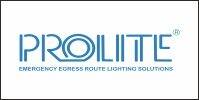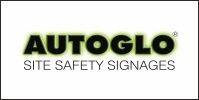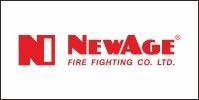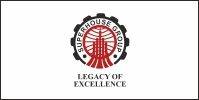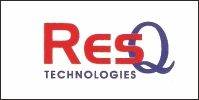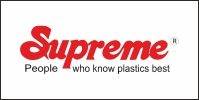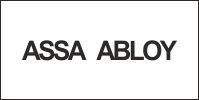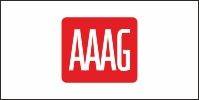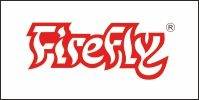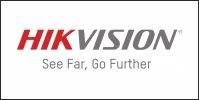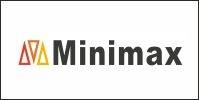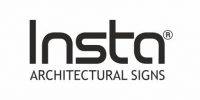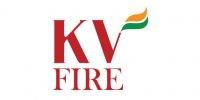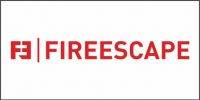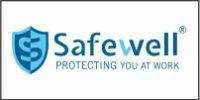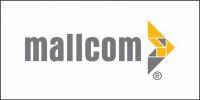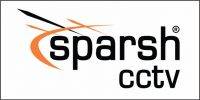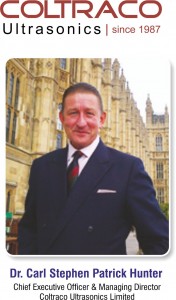 This opinion piece explores the practical application of fire engineering practise and outcomes in gaseous extinguishing systems and the technological opportunities that exist to minimise risk to the installed system and its maintenance and to enhance the relationship between the fire industry and its customers by integrating the fire system as an essential part of the overall business activity in todays globalised and inter-connected markets and add mutual value to that relationship in the furtherance of a “Safety First” aim. The opinions expressed in this article are the Authors and the citation of organisation names is not to mis-represent them as product endorsement.
This opinion piece explores the practical application of fire engineering practise and outcomes in gaseous extinguishing systems and the technological opportunities that exist to minimise risk to the installed system and its maintenance and to enhance the relationship between the fire industry and its customers by integrating the fire system as an essential part of the overall business activity in todays globalised and inter-connected markets and add mutual value to that relationship in the furtherance of a “Safety First” aim. The opinions expressed in this article are the Authors and the citation of organisation names is not to mis-represent them as product endorsement.
Our relationship with India is a Special One. India the largest Democracy – ours the world's oldest. The UK is India's No 1 foreign investor. 1.5m Indian's live in the UK and 40,000 Indian students are at our Universities and we welcome them. Just as you have created a society of diversity with Hindus, Muslims Sikhs and Christians living in harmony so have we here. “Incredible India” does exist; when so many talk of China in London we speak of India. India is my China, by which I mean that our strategic focus is in India. With the possibility of a new global polarity emerging and with all the uncertainty that may bring those shared values and outlooks between our countries matter as much today as ever they did before. But more than that India is in our heart.
Gandhi once said, “The Emperorship must go, but I should love to be an equal partner with Britain, sharing her joys and sorrows”. Today we are blessed to be equal partners. So many times in so many places in India it is the Indians who say to me that it is England who gave India her railways, her unifying English language, her Civil Service, her law, her ports, her Army and her Navy (India will shortly have one of the largest Navies on earth and a very capable and fine one it is too) and in some cases, her great cities. Some say it was the British who provided the very infrastructure of today's India and that it was
the British who unified India. But India has transformed England too. 1.3m Indians served in WW1. 2.5 million Indian's served in the WW2 and you won 30 Victoria Crosses in it. Our debt of gratitude to you is of a very special kind. India and England have a shared history, language and culture. India is in our being. The very words of bungalow, dhobi, pukka, polo, pyjamas, gymkhana, khaki, chutney, pundit and char are yours and they are in ours now. And before you think that this Englishman has had too much “mid-day sun” remember “doollally” is yours too !
Too often India sees itself as an under-developed country, but in fact it is as advanced a civilisation as any on earth and today it is developing towards being one of the world's greatest countries on earth. By 2030 India is forecast to be the world's 3rd largest economy.Nehru once said, “I have become a mixture of the East and the West, out of place everywhere, at home no-where”. Excepting the home which is my Wife and my Family, so many times I feel the same. RusiMody was one of my 3 great Mentors in life. He has sadly passed now. But he was Chairman of TATA Iron and Steel and of Air India too. We used to look after his Bentley when he was away from London in Calcutta. What he the Indian taught me the Englishman was the essential value of Integrity. The gateway between India and the United Kingdom is open, ours particularly so, and it is our scientific, mathematical and commercial integrity which we bring to India.
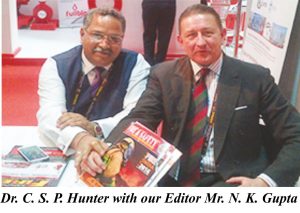 Nehru said, “We live in a wonderful world that is full of beauty, charm and adventure. There is no end to the adventures that we can have if only we seek them with our eyes open …loyal and efficient work in a great cause, even though it may not be immediately recognised, ultimately bears fruit”. We share these thoughts. We have established two wonderful Strategic Partners in India , Captain Amit for Fire Safety and Commander Vikesh (Retd) for the Indian Navy, Indian Coast Guard and Indian Shipping. We have created an Indian ODA Service Station in Calcutta and will open another soon in Bombay. For the first time in 25 years our products can be calibrated and serviced in India and are now available to be purchased in Indian Rupees too. We believe we are the first British company in our field
Nehru said, “We live in a wonderful world that is full of beauty, charm and adventure. There is no end to the adventures that we can have if only we seek them with our eyes open …loyal and efficient work in a great cause, even though it may not be immediately recognised, ultimately bears fruit”. We share these thoughts. We have established two wonderful Strategic Partners in India , Captain Amit for Fire Safety and Commander Vikesh (Retd) for the Indian Navy, Indian Coast Guard and Indian Shipping. We have created an Indian ODA Service Station in Calcutta and will open another soon in Bombay. For the first time in 25 years our products can be calibrated and serviced in India and are now available to be purchased in Indian Rupees too. We believe we are the first British company in our field
to demonstrate in these terms our strategic commitment to India. Our network of Indian dealers and distributors continues to grow and we warmly welcome applications from other first rate Indian companies to support our growth towards the magic day when we can open an Indian office and create our company in India.
There exists much “ungoverned space” in the fire industry in India and globally too. Whether in regard to installation, commissioning or servicing there are too few qualified Engineers who may be considered subject matter experts. In terms of extinguishing systems there exist 2 broad categories: sprinkler systems and gas systems. The former can suffer leakage but the latter can cause catastrophic effect given its physical pressures. Overall, the value of the assets that fire systems protect is increasing very rapidly but the competitive nature of the free market in the fire industry places great pressure on it to deliver systems which comply with the regulations and deliver the asset protection at the most economical cost. Too often fire protection is seen as a cost than an investment and something vital to the overall business activity of the customer.
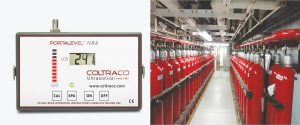 Our experiences in the fire industry globally have included wonderful ones of professionalism and care from dedicated Indian Fire Engineers and Risk Managers. Many of our products and systems today and others that we have under development are the direct result of advice and guidance that we have received from these very fine Fire Engineers. Over 25 years we have received numerous acts of technical advice from some of the leaders in the industry both in the UK and the USA but also from Canada, Australia, Germany and Singapore. Many of these have come from Engineers at the large OEM's such as Kidde, Tyco, Siemens, Minimax and Fike, but there exist many highly qualified Engineers at some of the smaller companies too who have also guided us along the way. Trade and certification organisations such as the FIA in the UK and the NFPA and UL in the USA have become a part of our fabric.
Our experiences in the fire industry globally have included wonderful ones of professionalism and care from dedicated Indian Fire Engineers and Risk Managers. Many of our products and systems today and others that we have under development are the direct result of advice and guidance that we have received from these very fine Fire Engineers. Over 25 years we have received numerous acts of technical advice from some of the leaders in the industry both in the UK and the USA but also from Canada, Australia, Germany and Singapore. Many of these have come from Engineers at the large OEM's such as Kidde, Tyco, Siemens, Minimax and Fike, but there exist many highly qualified Engineers at some of the smaller companies too who have also guided us along the way. Trade and certification organisations such as the FIA in the UK and the NFPA and UL in the USA have become a part of our fabric.
Set alongside these however are anecdotal experiences which are highly concerning:
- Systems portrayed and installed by contractors as NOVEC™ 1230 but filled with sand or water.
- High pressure gas systems without the means to actuate them.
- Cheap pressure gauges sticking in position under humidity or mechanical fatigue.
- Safety pins being retained in position in the cylinder valves after installation.
- Marine CO2 systems with 20% of the CO2 cylinders installed on commercial shipping being empty or partially-filled.
- Over-filled and under-filled cylinders.
- Pipework and cylinders freshly painted but with severe internal corrosion.
- Room integrity testing with questionable results and with the room integrity remaining un-monitored after testing.
- Liquefied extinguishants being confused by installers with Inert gas systems.
- There exists a lack of understanding of the organic compounds of some liquid extinguishants and their corrosive effect on the cylinder in the event of condensate ingress.
- Load weigh systems not accounting for the design parameters of the cylinder thread which were not designed to suspend its weight
- Shipping companies not implementing the FSS code of the IMO SOLAS regulations.
- We have been regularly asked how to operate portable Portalevel™ liquid level indicators on dry powder extinguishers.
Our Safesite™ and Safeship™ concepts aim to deliver technologies which enhance safety at customer critical infrastructure at sea and on land. Safety First.
Marine servicing companies bid to service a ships CO2 system; this can comprise 200-600 x 45KG CO2 cylinders per ship. These are under high 720 psi/ 50 bar pressure. They can discharge accidentally. One of the highest probabilities of discharge occurs during their maintenance. Some service companies estimate that at one time 20% of a ships CO2 cylinders have discharged or partially leaked their contents and there are over 55,000 commercial vessels at sea at any time. Over any one 24 hour period there is a Gas Carrier at sea between Qatar and the UK every 300 miles ! But the ship is often only available for 4 hours to the marine servicing contractor, and the servicing crew have to get to the ship often by marine launch and the winning contractor is often the one who bids lowest. Historically, and as only 1 component of a CO2 system inspection, these service crews shut down the CO2 system, dismantle it and weigh each cylinder.
- On average each cylinder will take 40 minutes to dismantle, weigh, record and re-instal
- It would therefore take 400 man-hours to achieve that on a 600 cylinder marine installation
- Even using a UL-listed Portalevel™ MAX Marine liquid level indicator a perfect condition cylinder can be checked for contents in 30 seconds the average time to record and validate readings should take 1-3 minutes per properly-filled cylinder.
- If a ship has 600 cylinders therefore that would mean 600-1,800 minutes test time or 10-30 perfect man-hours for this task alone.
- Too many times therefore good servicing companies may not have the physical time to perform the inspection required.
- But alongside them there are other companies who are said to randomly check some cylinders and then place “tested stickers” on the rest.
- Because the normal design concentration of CO2 of 34-72 v/v % is above the nearly immediate acute lethality level an extremely narrow safety margin exists for these systems.
- Its mechanism of fire suppression is through Oxygen dilution to 8-15% not the chemical disruption of the catalytic combustion chain as with other clean agents.
It seems unfathomable then why these systems are not permanently monitored rather than leaving them to stand alone unsupervised and unmonitored 364 days a year until their annual certification check.
The UK fire industry is accepted around the world as a leader in its understanding of good engineering practise. We have in this country some of the finest fire engineers globally. The definition of a free market is an idealised form of a market economy in which buyers and sellers are allowed to transact freely based on a mutual agreement on price without state intervention in the form of taxes, subsidies or regulation. So if we accept that we do not and cannot operate in an idealised economy but one that is regulated, and if we accept that we have the global engineering standing within our industry, the only reason why price dominates the environment is because Government and Regulators are standing aside from the creation of an environment in which safe engineering goes rewarded rather than prejudiced, and potentially because the industry itself is unaware of new technology. High value assets such as Data Centres (the UK has the largest concentration of them globally outside the USA), Military Communication facilities (the UK the 2nd largest defence budget globally), Power Generating Stations, Electricity & Gas Sub-Stations, Mobile Phone Networks, Critical Engineering facilities, Offshore Oil & Gas Platforms, Pipeline Transmission, Refineries – all of these are critical infrastructure with widespread catastrophic effect in the event of their downtime or shutdown. Their asset values requiring fire protection far exceed the delivery of minimal compliance and the cost or damage to reputational integrity far in excess of the cost of a real-time monitoring system.
Technologies exist right now that can mathem-atically and far more efficiently test room integrity. They exist to quickly, momentarily and highly accurately identify pipework corrosion. Gases under pressure can be monitored and liquefied gases can be permanently monitored. Contents and pressure can be simultaneously monitored offering remote diagnostics and remote monitoring capabilities and can extend to the delivery of autonomous systems in relation to them. The whole drive of our civilisation is to continually strive to understand and apply the fundamental Laws of Science and application of Physical Principles. This is why we place Science at our core in the company and we are fortunate to having some very fine Scientists amongst us.
The most critical point of a pressurised cylinder is the meeting of the cylinder neck with its valve. For over 100 years the industry has monitored cylinder pressure at that critical point. The assumption is that the cylinder pressure gauge is of high, almost MIL-SPEC quality, but they are often not and commercial pressures under a bidding process can incline some to select minimally compliant gauge mechanisms. Technologies are soon to exist to monitor both liquid content and gas pressure safely – from the external sides of the cylinder rather than within it – in both fixed and portable forms. If we can monitor the contents we can calculate the mass/weight of the liquefied extinguishant. If we can monitor the pressure of the gas on top of the liquefied extinguishant then we can also monitor the pressure of an Inert gas which is in an entirely vaporous form.
These technologies offer great opportunity to the fire industry. They enable customers confidence that a fire company has installed to a gaseous extinguishing system a semi-autonomous monitoring capability to safeguard it. The customer-supplier relationship becomes an embedded and joined one. That is additional value and that creates revenue reward. It is in the public interest. What CEO of a company today wants to be shown to have installed a fire system that is left standing and unsupervised for 364 days of the year until the return of the servicing company for its annual certification check ?
Ultrasound is merely acoustic (sound) energy in the form of waves of high frequency that are above the human audible range.
- It is used widely in the military, medical and industrial fields.
- Sound is in itself vibrations that propagate as a mechanical wave or pressure and transmit through solid, liquid or gaseous mediums.
- In physiology sound is the reception of such waves and in psychology their perception by the brain.
- This is why a human being listening with one ear angled from the other (and therefore at a different distance from the sound source to the other) “hears” sound as “one sound”.
- With Science at our Core we aim to replicate nature and use these fundamental physical principles to design and manufacture products and systems that can be used by Fire Engineers and their Customer Installations.
- Portascanner™ uses ultrasound to test the integrity of confined spaces and can detect leak sites as small as 0.06mm.
- Portagauge™ uses ultrasound to test the internal and external corrosion on pipework and cylinder wall thickness to an accuracy of +/-0.1mm.
- Globally we are known for the design and manufacture of 11 different model types of Portalevel™ liquid level indicators.
- Accurate to +/-1.5mm for CO2, FM-200™ , NOVEC™ 1230, HFC-225 & 227, remaining Halon systems, FE-13™, FE-25™ and FE-36™.
- We can monitor these 24/7 with the fixed, data-logging and autonomous monitoring system, Permalevel™ Multiplex &Permalevel™ Single Point.
- Signals from these fixed monitoring sites can be monitored centrally at the customer location and globally.
- Liquefied extinguishant weight conversions will be mathematically possible when we launch the world's first Portasteele™ Calculator in June.
We are committed to Science and devote significant resource to Research & Development for our fire industry and end-user customers. We see a day when products and systems will be designed that will monitor Gas Vapour above the liquid level and Inert Gases too.
This is the “ungoverned space” but in it technology offers many solutions. Who today would object to vehicle safety restraint mechanisms ? Who today would willingly replace a “chip and pin” credit card with one requiring only a signature ? For too many years our industry has been left to too few brilliant – largely British and American – experts to determine safe outcomes. But as the world changes, so must our industry integrate technological solutions to provide a bulwark against wider industry misinterpretation and minimal, even occasional and flagrant, disregard in the application of standards and good global engineering practise, creating standards which all can understand and apply.
The “white heat” of technology shines as a beacon of hope to our industry and so too enables justification for customers to actively engage in the monitoring of gaseous fire extinguishing systems as an integrated and essential element to their business activity.
It is this which we bring to India and is so much that India has brought to us.
About the Author
Dr. Carl Stephen Patrick Hunter is Chief Executive Officer & Managing Director of Coltraco Ultrasonics Limited a designer and manufacturer of portable instruments and fixed monitoring systems for the Naval, Shipping, Offshore-Petrochemical, Energy and Fire industries . An Honorary Doctor of Science, Fellow of the Institute of Marine Engineers and Member of the Royal Aeronautical Society, Royal Institute for International Affairs, Royal Society of Asian Affairs and Royal United Services Institute. An active member of the Shipping and Fire industries working in 107 countries Dr Hunter is also a member of the Export Council of the FIA and has a particular interest in global affairs and the application of Physical Principles and Mathematics and working with high-level British Graduates and Postgraduates within a dynamic Research & Development environment to deliver Safesite™ and Safeship™ technologies.












